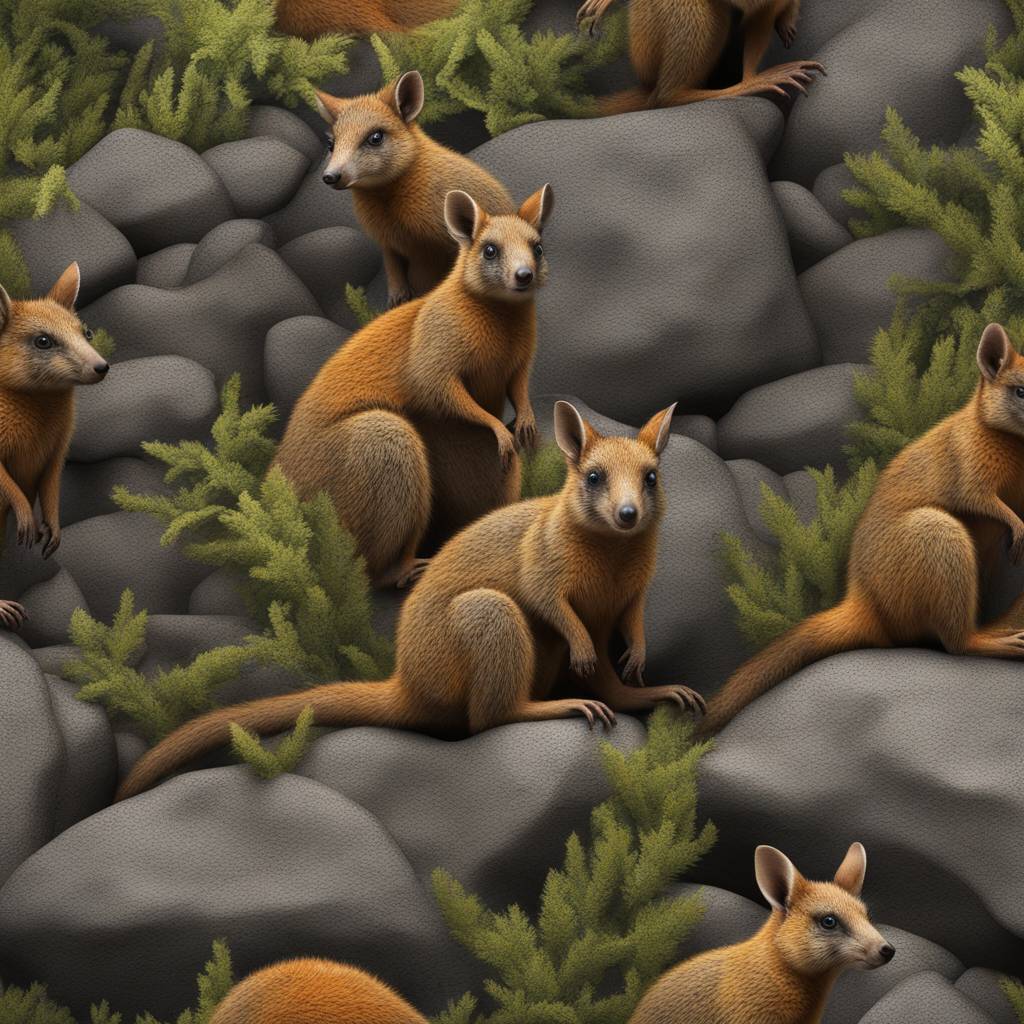Australian rock-wallabies, particularly the dwarf species, have been found to have the ability to compensate for their small size by packing a stronger bite than their larger relatives. This discovery was made by researchers from Flinders University who were investigating how these small marsupials are able to feed on the same foods as much larger species. Study leader Dr. Rex Mitchell coined the term ‘Little Wallaby Syndrome’ after examining the skulls of dwarf rock-wallabies and finding that they possess adaptations that allow them to more than make up for their size.
The study, which was published in the Royal Society’s Biology Letters, delves into the superpowers of these tiny rock-wallabies. Coauthor Associate Professor Vera Weisbecker explains that species like the nabarlek are able to consume similar foods to their larger relatives, hinting at evolutionary changes in their jaws that allow them to maintain their diet. The researchers scanned nearly 400 rock-wallaby skulls, including all 17 species, to compare the features of their skulls and confirm their suspicions.
The results of the study revealed that dwarf rock-wallabies have adaptations in their skulls that make them more effective at biting harder foods. These adaptations include shorter, rounder snouts and teeth positioned at the back of the jaw where they can better handle harder bites. Dr. Mark Eldridge, a co-author from the Australian Museum, notes that the dwarfs also have larger teeth relative to their size, indicating a need to bite harder into their foods. The two dwarf species also had different teeth that were the largest, potentially indicating different adaptations to different types of vegetation.
One surprising finding was that the nabarlek, one of the dwarf species, is the only known marsupial species that continuously grows new molars throughout its life. This further supports the idea that dwarf species have evolved to have skulls better suited for biting than their larger counterparts. Dr. Mitchell emphasizes the importance of these findings, as they highlight the functional effects of skull size on skull shape, particularly in relation to feeding adaptations.
The research team’s findings shed light on the importance of considering differences in skull size when studying feeding adaptations in animals. The study also highlights the need for smaller animals to have harder-biting skulls in order to consume the same types of foods as larger animals. By examining the skulls of rock-wallabies, the researchers were able to uncover unique adaptations in dwarf species that allow them to compensate for their small size and maintain their diet. This research contributes to our understanding of how animals evolve to survive and thrive in different environments.


